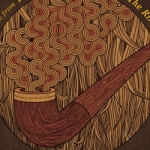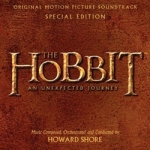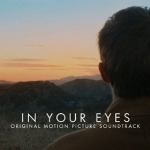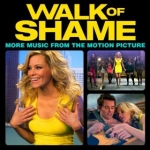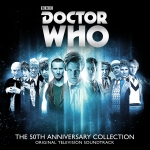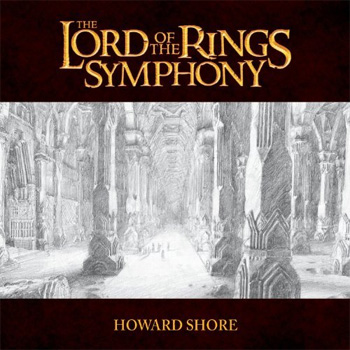
Title: The Lord of the Rings Symphony
Composer: Howard Shore
Label: Howe Records
Release Date: September 13, 2011
A short time after The Return of the King came out, soundtrack composer Howard Shore took on the daunting task of reducing three movies’ worth of music into one concert-length work, and The Lord of the Rings Symphony is the result. I had the privilege of performing this magnificent work in 2004 when the Atlanta Symphony Orchestra and Atlanta Symphony Orchestra Chorus presented it with Shore himself conducting (I was a member of the ASO Chorus at the time), for only the third time in the United States up to that point. Since then, it has been performed not only throughout the U.S. but in many countries throughout the world, and now, just in time for the tenth anniversary of the first film’s release, it has finally been recorded so an even wider audience may experience it.
The symphony consists of six movements, two for each of the three movies. The six-part structure is intended to mirror the six books that make up Tolkien’s original Lord of the Rings, but the cues used correspond to the order of events in the movies, not the books. It is basically a condensed version of the three movie soundtracks using the best representatives of the main musical motives found throughout the trilogy. The whole range of emotions is covered, including the lighthearted and lilting Shire theme and the grand, heroic sounds of the main theme, as well as the dark and scary moments punctuated by heavy percussion and harsh vocal parts. Each movement is one long track with a number of sections that flow seamlessly from one to the next.
The choices of cues really emphasize the involvement of the chorus, which sometimes blends in with the instrumental textures and sometimes is very prominently featured. Although the three biggest solos are in English, most of the choral singing is done in various languages created by Tolkien, including not only the elven tongues Quenya and Sindarin but also Rohirric, Dwarvish and even a bit of the Black Speech of Mordor. All of the texts are based on poetry and songs from the books, some taken directly from them and some adapted and translated by Philippa Boyens. A copy of the various texts and their translations can be found here, in a document compiled for the edification of the Atlanta Symphony Chorus as they were preparing the work in 2004. Included for the soloist are “Gollum’s Song” from The Two Towers, which ends the fourth movement and “Into the West,” which was performed by Annie Lennox on the soundtrack for The Return of the King, and which here ends the sixth movement. Fans of The Fellowship of the Ring may notice that the song from that movie, “May It Be,” is absent from this work — Enya, who performed it on the soundtrack, also wrote it, not Howard Shore, so leaving it out avoids any licensing issues that would have arisen if Shore had used it.
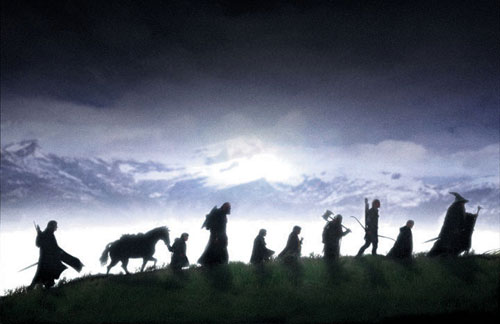
This recording of The Lord of the Rings Symphony was made in February of 2011 at a live concert in Lucerne, Switzerland. It is performed by the 21st Century Symphony and Chorus under the baton of Ludwig Wicki, who founded the Lucerne-based musical ensembles to perform film scores for live audiences. Although the instrumentalists are top-notch, the chorus sometimes leaves a bit to be desired. Most of the time they have a very lovely sound, but there are a few points where the loud, prominent, high-pitched singing is not nearly as well-blended or polished as it could have been. Unlike their adult counterparts, fortunately, the treble choir and boy sopranos have a nice, pure tone in the few occasions they are used. The star of the show, however, is soprano soloist Kaitlyn Lusk. She has a versatile voice that sounds good in both lower and higher ranges, and she shifts between vocal registers seamlessly. She is magnificent throughout, but especially in the sixth movement, and her interpretation of “Into the West” is easily my favorite part of the entire recording.
If you are not familiar with Howard Shore’s music from Peter Jackson’s The Lord of the Rings trilogy and want a good overview of all three scores in one place, then this is definitely the recording for you. Even if you already own the soundtracks, though, you would not go wrong to add The Lord of the Rings Symphony to your collection.
Track Listing:
CD 1 – The Fellowship of the Ring
1. Movement One: “The Prophecy”; “Concerning Hobbits”; “The Shadow of the Past”; “A Short Cut to Mushrooms”; “The Old Forest”; “A Knife in the Dark” (11:25)
2. Movement Two: “Many Meetings”; “The Ring Goes South”; “A Journey in the Dark”; “The Bridge of Khazad-dûm”; “Lothlórien”; “Gandalf’s Lament”; “Farewell to Lorien”; “The Great River”; “The Breaking of the Fellowship” (34:04)
CD 2 – The Two Towers
1. Movement Three: “Foundations of Stone”; “The Taming of Smeagol”; “The Riders of Rohan”; “The Black Gate is Closed”; “Evenstar”; “The White Rider”; “Treebeard”; “The Forbidden Pool” (18:15)
2. Movement Four: “The Hornburg”; “Forth Eorlingas”; “Isengard Unleashed”; “Gollum’s Song” (10:28)
The Return of the King
3. Movement Five: “Hope and Memory”; “The White Tree”; “The Steward of Gondor”; “Cirith Ungol”; “Anduril” (15:26)
4. Movement Six: “The End of All Things”; “The Return of the King”; “The Grey Havens”; “Into the West” (26:12)
Rating: 4 / 5 Stars


